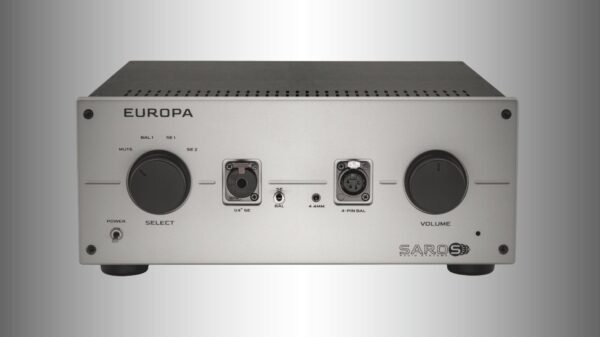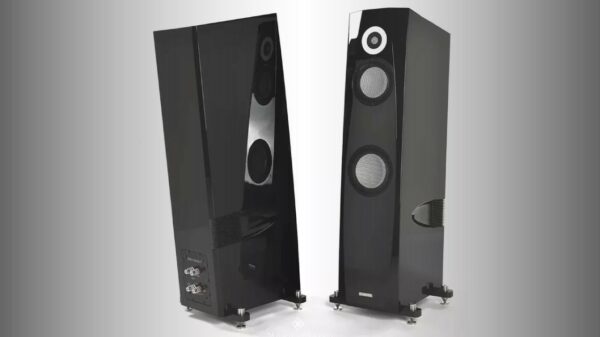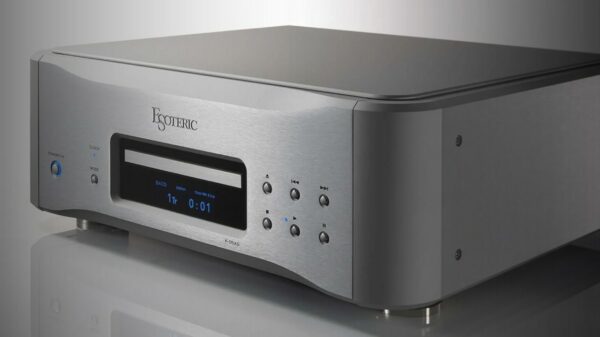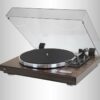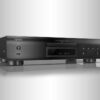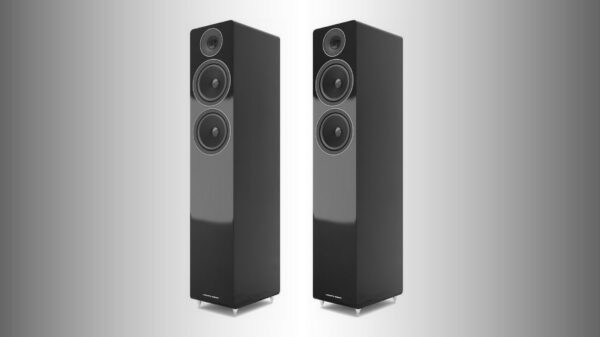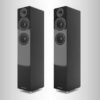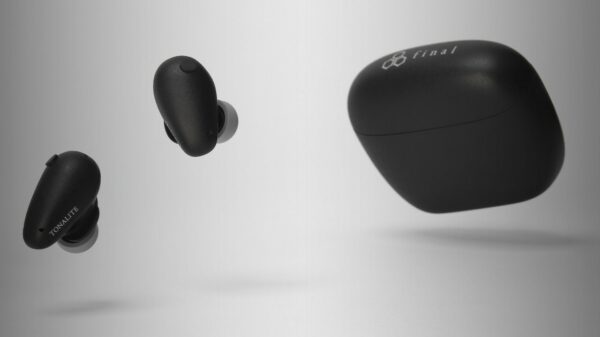Cayin has launched a new portable music player called the N7+. The Cayin N7+ builds on its predecessor, the N7, offering higher power output, improved energy management, and an upgraded power transistor. The N7 is available in a limited edition. The production run is unknown.
Cayin N7+: high-quality sound from your jacket pocket
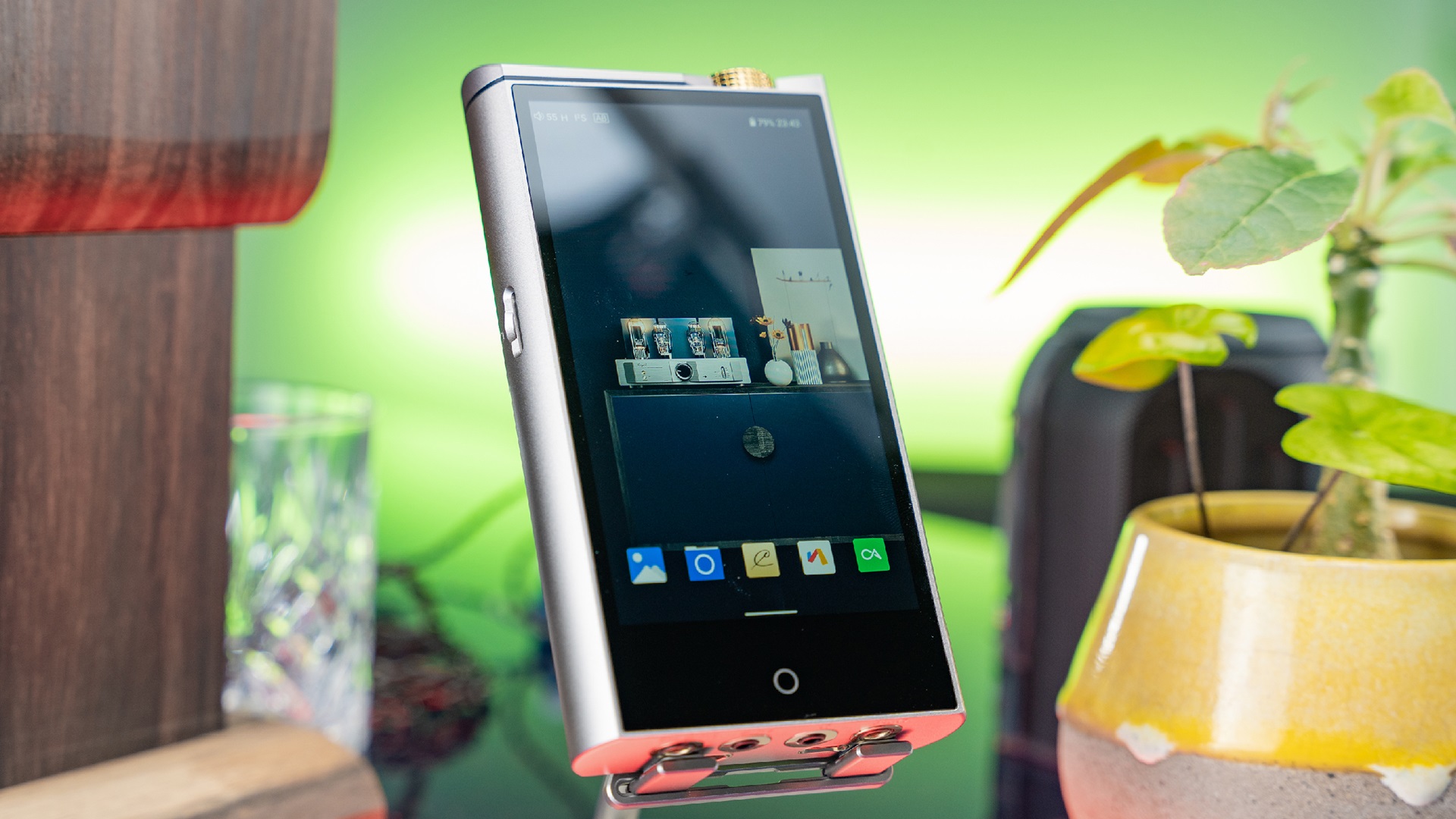
The Cayin N7+ is a portable digital music player that promises improved sound compared to any smartphone, as well as its predecessor, the N7 . To achieve this, the N7+ features a discrete digital-to-analog converter (DAC) and a fully balanced headphone amplifier with bipolar transistors that operate in either Class A or Class A/B mode. The amplifier circuit is optimized for balanced and unbalanced headphone outputs. According to the manufacturer, the discerning user will have nothing left to desire.
The consistent implementation of a high-end philosophy isn’t always feasible in the mobile hi-fi segment due to the limitations of a compact design. The Cayin N7+ sets new standards here with its fully symmetrical circuitry and printed circuit board layout. The housing is precision-crafted from a special aluminum-magnesium alloy and, thanks to its sandblasted titanium surface, is also a feast for the eyes. The 5-inch Full HD TFT display impresses with multi-touch and gesture control and scratch-resistant glass. Compared to its predecessor, the built-in battery life has been extended: when playing in Class AB and using asymmetric headphones, the stated playtime is up to 13 hours.

The fully symmetrical volume control is managed by a dedicated circuit, which, thanks to the unique metal rotary knob, allows for adjustment in 256 sensitive steps of 0.5 dB each. This ensures that the fully symmetrical headphone amplifier can drive all suitable headphones within the optimal control range, whether connected via the 3.5 mm jack or the 4.4 mm Pentaconn connector.
Cayin N7+: PCM and DSD
The Cayin N7+ isn’t just a portable hi-res player for files and data streams up to PCM768 and DSD512. Thanks to its asymmetrical and balanced analog outputs and high-quality volume control, the Cayin N7+ can also be used as a preamplifier or as a network streamer for your home system. The volume can also be fixed and then controlled with another device. The USB-C output and the alternative I2S connection for DSD also deliver high-quality data unprocessed on demand, allowing it to function as a streaming device as well. The internal storage is meager at 64 GB, but can be expanded up to 1 TB with a memory card.


Connectivity is established via Wi-Fi. This allows for updates and access to common streaming services. Thanks to the customized and pre-installed Android 12.0 and access to the Google Play Store, content from other streaming services or music apps like Qobuz or Apple Music can also be played through the N7+. For full compatibility with wireless headphones, the N7+ can also be used in transmitter mode, making digital data available wirelessly.
Cayin N7+: analog circuits in class A or class AB
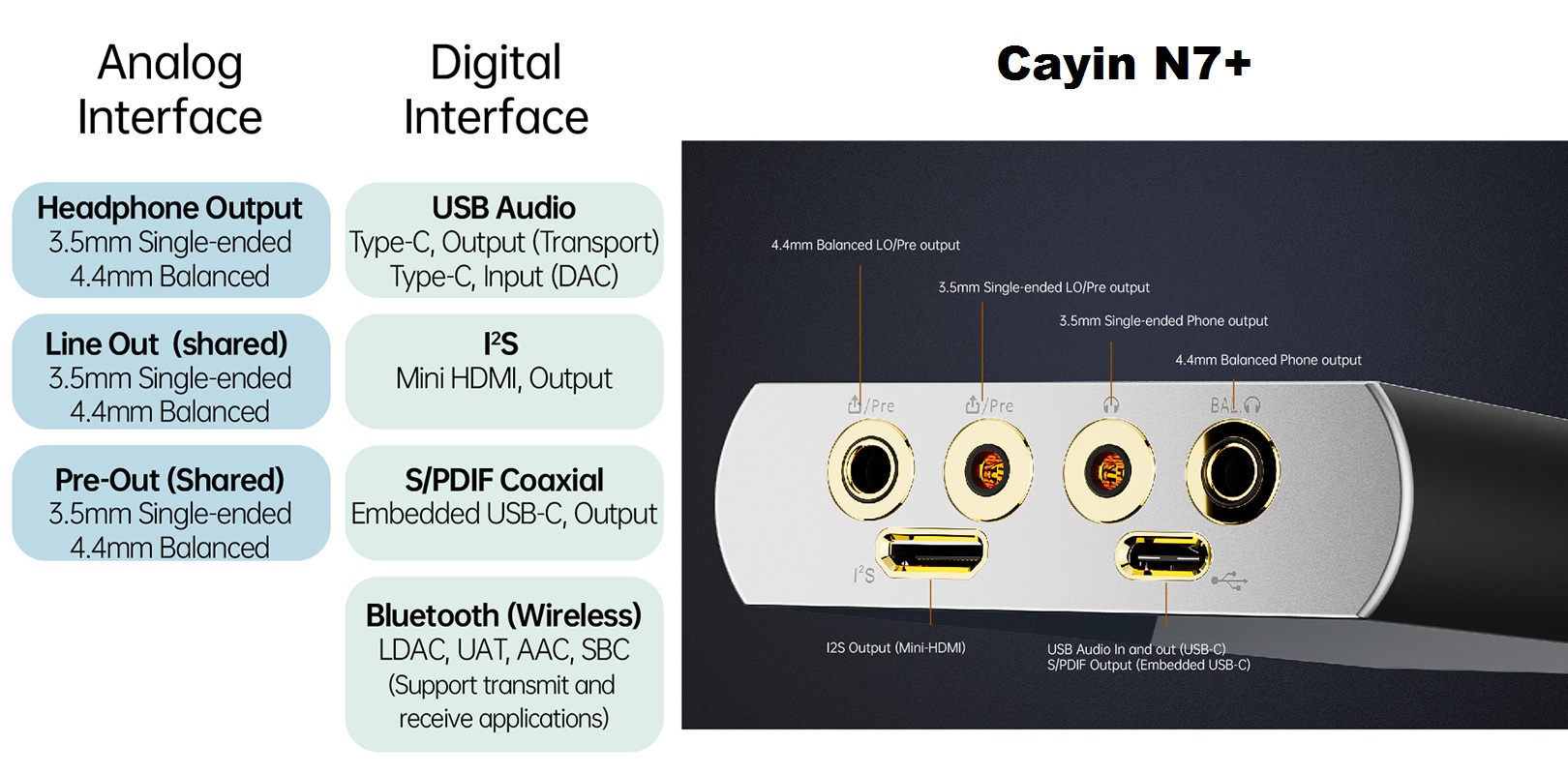
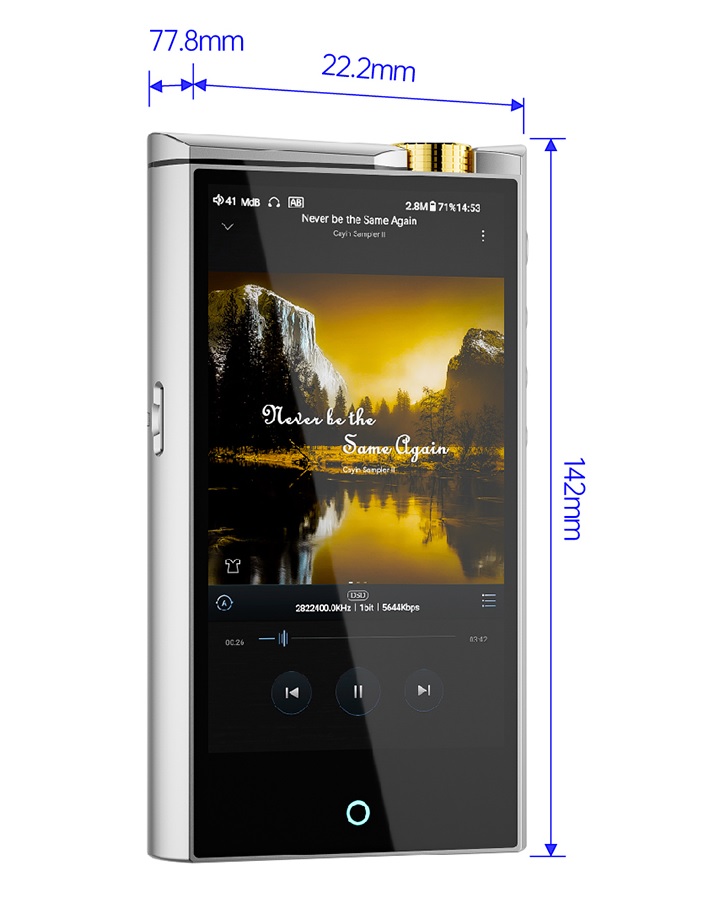
The Cayin N7+’s bipolar output transistors can be operated in either Class A or Class AB mode. This allows the sound character to be tailored to the user’s preferences or the connected headphones. Class A amplification delivers a warm, highly transparent sound. This results in a detailed, pleasant sound, perfect for crystal-clear reproduction of modern music with rich detail. Class AB, on the other hand, offers improved dynamics and fast impulse processing, according to Cayin, and is often the preferred choice for higher demands on dynamic range during playback. Class AB operation also consumes slightly less power.
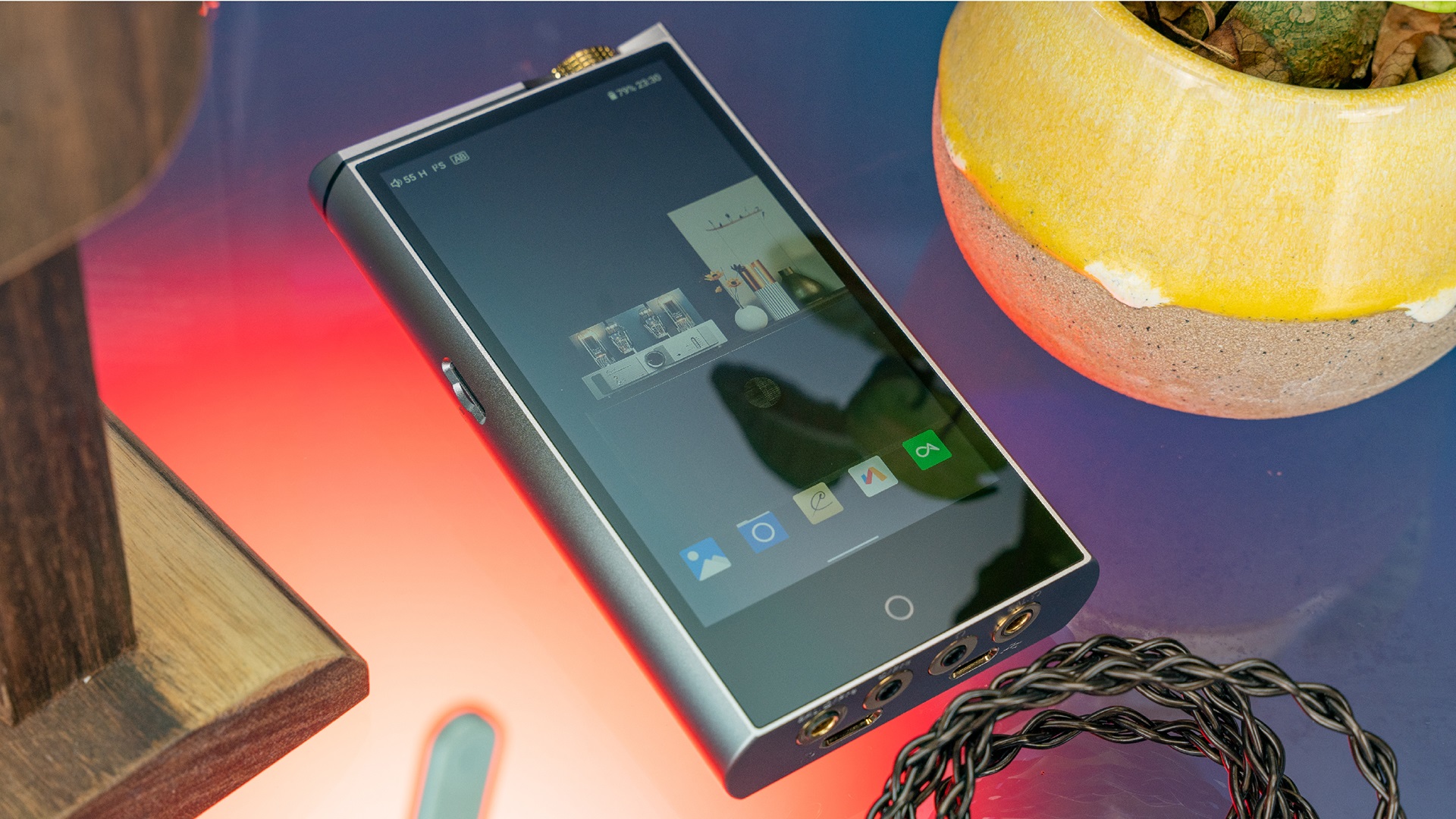

After numerous listening tests, the Cayin developers opted for dual bipolar transistors for the discrete driver stage, enabling a symmetrical Class A circuit in push-pull mode. Inside the headphone amplifier itself, the low-noise JFET stage drives the actual bipolar output transistors, also known as BJTs (bipolar junction transistors), in differential mode. This reduces noise and distortion to an absolute minimum and increases power to 330 mW in single-ended mode and 690 mW in symmetrical mode.













